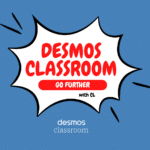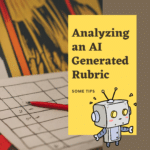Brownie Division
If you have been following me recently you know that I am completely obsessed with the book “Mathematical Mindsets” by Jo Boaler. Dr. Boaler is a mathematics professor at Stanford who shows how recent brain research should cause us to change the traditional approaches to teaching math.
Color Coding
In her book, she shares a color coding activity to help students to conceptually divide. She poses a problem about a tray of brownies that needs to be shared amongst friends.
The Answer is Always A Spreadsheet
I, of course, look at that activity and think that could be done with pixel art!! A spreadsheet where the columns and rows have been reduced to small squares. Typing single digit numbers paints the spreadsheet.
While hands on and manipulatives should never be taken out of math classes, spreadsheets can be one way that students model their mathematics.
Template
Share the spreadsheet template with students. The problem in the spreadsheet is exactly as Dr. Boaler presented it.
Personalize
Students can use their own name in this example. Cell AD4 is the name used in the problem. Students can replace this with their name or a friends.
Demonstrate Multiple Ways
The spreadsheet sets out several “trays of brownies.” What I learned from Mathematical Mindsets, is we want to have students represent their thinking in multiple ways. I am particularly excited about students comparing how they cut up the brownie pan, I bet some students discover a way they didn’t think of.
Change the Constraints
The next tab gives students a chance to practice the idea more with a different number of friends.
Extend the Problem
Jo Boaler recommends on page 192 of her book “to ask those who finish problems to extend them, taking them in new directions.” The next tab allows students to design their own brownie pan. Students choose how many pieces their pan will have and how many friends. They enter this number into cells AA1 and AI1. They would then highlight the range of cells that creates that many pieces. Using the border tool in the toolbar, students create an outer border to design the pan.











2 thoughts on “Modeling Division of Brownies by @joboaler”
As a Special Educator who teaches math, I am excited by this post. First of all, I like how you mention that manipulative items should not be taken out of math classes. I agree. My students require visual methods and exploration in order to conceptualize math skills. I like the use of speadsheets because they are: visual, personalized, and a meaningful way to incorporate technology. I also like how the math problem is displayed on the corresponding spreadsheet; this way, my students will not forget the task at hand. Is there a way to incorporate an audio component, so problems can also be read to them?
I am not sure if TextHelp Read Write will work for audio but you might try it.